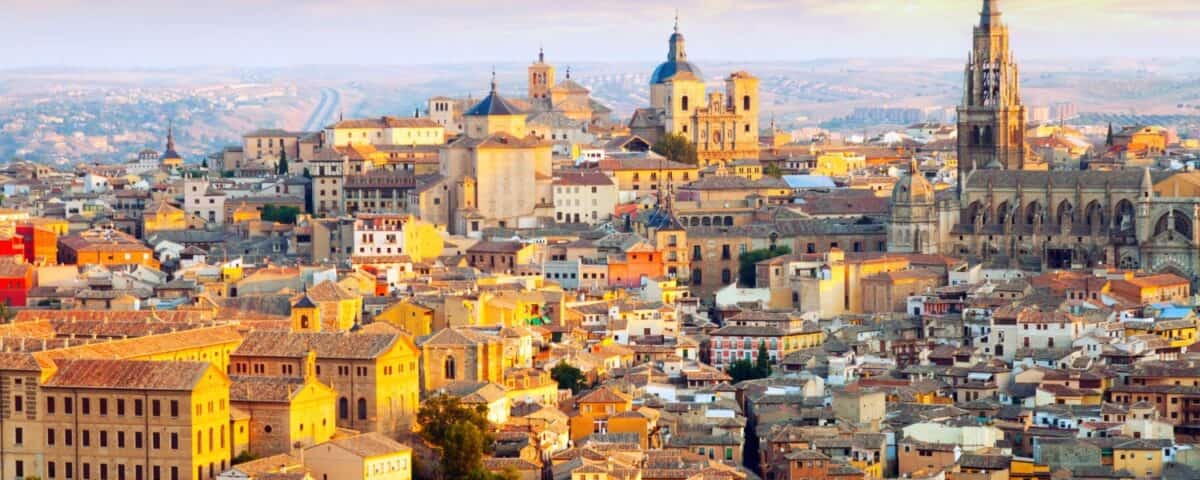
Portugal: surfing and the seasons

When can you go surfing in Peniche-Baleal?
Lisbon, the capital of Portugal, is a city that captures the essence of both modernity and tradition. It is a place where ancient history blends harmoniously with contemporary culture, creating a truly enchanting atmosphere.
With its unique blend of architecture, cuisine, music and traditions, Lisbon has something to offer everyone. Whether you’re a history buff, a food lover, an art connoisseur or simply a traveller looking for new experiences, Lisbon welcomes you with open arms.
Lisbon is a city that loves to celebrate, and you’ll get a taste of its lively festivals and events. You’ll have the opportunity to shop for unique souvenirs and indulge in wellness and relaxation during your stay. We’ll conclude with some practical tips to ensure your visit to Lisbon goes smoothly and remains unforgettable.
Our surfcamps offer a unique experience, combining the vibrant urban scene of the Portuguese capital with the waves of the Atlantic Ocean. Enjoy unforgettable surf sessions, quality lessons and the electrifying atmosphere of Lisbon. Whether you’re a beginner or an experienced surfer, our surfcamps invite you to surf to the rhythm of this fascinating city, where each day ends with an unforgettable evening in Portugal’s capital.
Contenus de la page
Surfing paradise: Costa da Caparica
Costa da Caparica, a coastal gem close to Lisbon, is a true paradise for surfing enthusiasts.
Costa da Caparica’s beaches stretch for miles, offering endless space for surfers of all abilities. Whether you’re an enthusiastic beginner or a seasoned surfer, you’ll find waves to suit your skill level.
One of the most popular surfing beaches is Praia do Dragão Vermelho. Its consistent, regular waves make it an ideal place to learn to surf.
For experienced surfers, Praia do CDS offers bigger, more powerful waves, perfect for more demanding surf sessions. This beach also attracts bodyboarders, offering a variety of aquatic experiences.
Another beach not to be missed is Praia da Morena. It is known for its consistent waves and is popular with local surfers. The relaxed and friendly atmosphere makes it an ideal place to socialise with other surfing enthusiasts.
Costa da Caparica is not only a surfer’s paradise, it’s also a wonderful place to relax and soak up the sun. After a revitalising surf session, you can lie back on the golden sands, soak up the sun and listen to the gentle murmur of the waves.
Caparica’s beaches also offer a variety of dining options, from seafood restaurants to relaxed beach cafés. Enjoy fresh fish dishes, grilled seafood and other local delights.
Whether you’re a keen surfer or just want to relax on beautiful beaches, Costa da Caparica offers the best of both worlds. It’s a place where adventure and relaxation come together, creating unforgettable memories on the shores of the Atlantic Ocean. Come and discover this coastal paradise just a few minutes from Lisbon.
The Heart of Lisbon
Lisbon, the capital of Portugal, is a unique destination. Its rich history, vibrant culture and stunning architecture make it a must-see for travellers from all over the world.
As soon as you set foot in Lisbon, you’ll immediately feel its unique atmosphere. The city’s hilly terrain, colourful buildings and cobbled streets create a picturesque backdrop for your adventure.
One of the most emblematic neighbourhoods you’ll discover is Alfama, renowned for its narrow streets, charming houses and the São Jorge Castle overlooking it. Alfama is Lisbon’s oldest district and is brimming with history. It’s a place where you can lose yourself in time as you wander through streets that have seen centuries of life unfold.
But Lisbon isn’t just about the past; it’s a city that lives in the present. The Baixa district, with its elegant squares and grand avenues, highlights Lisbon’s more recent history. You can admire the grandeur of Praça do Comércio and stroll down Rua Augusta, a lively pedestrian street full of shops and cafés.
One of the best ways to explore Lisbon is on foot. Stroll the streets, pop into the local bakeries for a pastel de nata (a delicious cream pie), and strike up conversations with the friendly locals. Lisboans are renowned for their warmth and hospitality, and you’re likely to make some memorable connections.
As you explore further, you’ll discover other districts such as Bairro Alto and Chiado, each with its own character and charm. Bairro Alto comes alive at night with its lively bars and Fado music, while Chiado is a centre of cultural activity, home to theatres, bookshops and art galleries.
Lisbon is a city of contrasts, where tradition and modernity coexist harmoniously. It’s a place where you can sip an espresso in a historic café, hop on board a vintage tram, then dine in a trendy rooftop restaurant with panoramic views over the city.
So put on your walking shoes and get ready to discover the heart of Lisbon, where every corner has a story to tell and every step is a journey through time and culture. Lisbon is waiting to be explored with open arms.
Neighbourhoods
Lisbon is a city of neighbourhoods, each with its own personality and charm.
After exploring Alfama and Baixa, it’s time to explore Bairro Alto, a district that comes alive when the sun goes down. Its cobbled streets come alive with the energy of revellers and the melodies of Fado, the traditional Portuguese music that evokes saudade, a feeling of melancholy. You can stop off at one of the small bars to enjoy a glass of ginjinha, a cherry liqueur, and soak up the lively atmosphere of the Lisbon nightlife.
Chiado is Lisbon’s cultural quarter. It is home to numerous bookshops, art galleries and fashion boutiques. A visit to the historic café “A Brasileira”, once frequented by the writer Fernando Pessoa, is a must for literature lovers. You can enjoy a coffee while admiring the statue of Pessoa, who always seems ready to strike up a literary conversation.
Another enchanting district is Belém, on the seafront. This is where you’ll find some of Lisbon’s most emblematic monuments, including the Belém Tower and the Hieronymites Monastery, both UNESCO World Heritage Sites. Be sure to try the delicious pastéis de nata at the Belém patisserie, a local speciality that will delight your taste buds.
The modern Parque das Nações district is a striking contrast to Lisbon’s historic quarters. Built for the 1998 Universal Exhibition, it features contemporary architecture and green spaces along the river. You can stroll along the waterfront, visit the Lisbon Aquarium or hop aboard the cable car for a panoramic view of the city.
Each of Lisbon’s neighbourhoods has its own character, and it’s fascinating to explore them one by one to discover their hidden treasures. Whether you’re looking for culture, lively nightlife or tranquillity by the water, Lisbon has the perfect neighbourhood for you.
Savour Portuguese cuisine
Portuguese cuisine is a real treat for the taste buds.
One of Portugal’s most emblematic specialities is “bacalhau”, or salted cod. This fish is prepared in many different ways, from “Bacalhau à Brás”, where it is mixed with eggs and potatoes, to “Bacalhau à Gomes de Sá”, cooked with onions, potatoes and garlic. Each region of Portugal has its own version of this emblematic dish, and Lisbon is no exception. You’ll find delicious variations of bacalhau in the city’s restaurants.
Another must-try dish is “Francesinha”, a kind of meat sandwich that originated in Porto, but can also be enjoyed in Lisbon. It’s made up of several layers of meat, sausage, ham and cheese, all covered in a spicy sauce and served with chips. It’s a hearty and delicious meal.
And don’t miss the chance to try “pasteis de nata”, the little caramelised cream custards that are a real institution in Portugal. You can try them in many of Lisbon’s patisseries, but the most famous is the one in Belém, where these delicacies have been prepared for generations.
For seafood lovers, Lisbon is a veritable paradise. Amêijoas à Bulhão Pato” are clams cooked with garlic, coriander and lemon, creating an explosion of flavours on the palate. You can also enjoy prawns, mussels and other fresh seafood in seaside restaurants.
To accompany your meals, don’t miss the opportunity to taste Portuguese wines, especially “vinho verde” and “port.” These wines are the perfect companion for an authentic Portuguese meal.
The Rich History of Lisbon
Lisbon is a city steeped in history, where every street corner tells a fascinating story.
One of the most emblematic symbols of Lisbon is São Jorge Castle, which has dominated the Alfama hill for centuries. Not only does this medieval castle offer incredible panoramic views of the city and the Tagus River, it also houses a museum that traces the history of the castle and Lisbon.
The Hieronymites monastery, located in the Belém district, is another historical treasure. This impressive Manueline-style building is a remarkable example of 16th-century architecture. You can explore its beautifully decorated interior and marvel at the artistic details that adorn every corner of the monastery.
Lisbon also played a key role in the Portuguese Age of Discovery. The Monument to the Discoveries, located on the riverbank, pays tribute to Portuguese explorers such as Vasco da Gama and Magellan. You can climb inside the monument to admire a spectacular view of the Belém district and the Tagus River.
The Mouraria district is steeped in Moorish history, recalling the period when the Moors occupied Lisbon. You can wander through its narrow, winding streets, discovering traces of Moorish architecture and feeling the influence of that era in the local culture and cuisine.
The Fado Museum is a must for anyone interested in traditional Portuguese music. It offers an insight into the history of Fado through interactive exhibitions and captivating musical performances.
Around every corner in Lisbon, you’ll find evidence of its rich past, from historic monuments to decorative azulejos and ancient cultural traditions. As you explore the city, you’ll be transported back through the centuries, discovering the fascinating heritage that makes Lisbon such a unique destination.
Art and Culture in the City
Lisbon is a city where art and culture are omnipresent, permeating every street and square.
The National Azulejo Museum is a must for art and history lovers. Azulejos, earthenware tiles decorated with colourful motifs, are an emblematic feature of Portuguese architecture. This museum traces the history of these magnificent ceramics and exhibits exceptional pieces dating back several centuries.
The Calouste Gulbenkian Museum, meanwhile, is a treasure trove of European art, housing an exceptional collection of paintings, sculptures, antiques and objets d’art. Here you can admire works by masters such as Rembrandt, Monet and Renoir, as well as rare pieces from the Middle East and Asia.
Lisbon’s contemporary art scene is thriving, with numerous galleries and exhibition spaces showcasing local and international artists. You can visit the LX Factory, a former industrial complex transformed into an arts district, where you’ll find designer boutiques, art galleries and trendy cafés.
Lisbon is also known for its vibrant music scene. Fado, the traditional Portuguese music, is an experience not to be missed. You can attend Fado shows in many of the city’s restaurants and bars, where the singers express saudade, a feeling of deep melancholy.
The São Carlos Theatre is the place to enjoy opera, ballet and classical music. It is a majestic building, famous for its exceptional acoustics.
Lisbon is also a place where street art is celebrated. The city’s streets are often adorned with colourful graffiti and urban art, creating a dynamic and ever-changing visual landscape.
Whether you’re an art enthusiast, a music lover or simply a culture lover, Lisbon offers a wealth of artistic and cultural experiences that will leave you in awe.
Explore the Tagus River
The River Tagus, which meanders majestically through Lisbon, plays a central role in the life of the city.
A cruise on the Tagus River is one of the best ways to discover Lisbon from a different angle. You can admire the city’s magnificent monuments from the water, including the Belem Tower, the Hieronymites Monastery and the 25 April Bridge, which resembles San Francisco’s Golden Gate Bridge.
Walking along the banks of the Tagus is also a pleasant experience. You can relax on the quays, enjoy the sea breeze and admire the traditional fishing boats, the “cacos”, which are an integral part of Lisbon’s maritime culture.
A visit to Cacilhas, on the other side of the river, will allow you to sample fresh seafood in local restaurants while enjoying breathtaking views over Lisbon. You can also visit the Cristo Rei, a statue of Christ overlooking the city from a hill in Cacilhas, offering an exceptional panoramic view.
For a unique experience, climb aboard one of the traditional boats, the “cacilheiros”, which operate between Lisbon and Cacilhas. These historic boats are a symbol of the city and offer a nostalgic trip across the river.
The Tagus also offers opportunities for water sports, such as kayaking and paddle boarding. You can hire a kayak and paddle along the river, discovering hidden coves and secluded beaches.
Whichever way you choose to discover the River Tagus, you’ll be seduced by its tranquil beauty and its central role in the life of Lisbon. It is a natural treasure that adds a unique dimension to the experience of the city.
Hidden Treasures and Local Secrets
Lisbon is full of hidden treasures and well-kept secrets just waiting to be discovered.
One of the most charming and little-known places in Lisbon is the Alcântara district. This former industrial area has been transformed into a trendy neighbourhood, where former warehouses are now home to cafés, art galleries and artisan boutiques. The aforementioned LX Factory is a prime example.
The Jardim Botânico Tropical, located in the Belém district, is a haven of peace often overlooked by visitors. Here you can wander among a wide variety of tropical plants, admire the historic greenhouses and relax in this oasis of greenery.
A fascinating local tradition is the “feiras da ladra”, Lisbon’s flea markets. The most famous of these is held in the Alfama district every Tuesday and Saturday. You’ll find everything from antiques and vintage clothes to local curiosities.
The Miradouro da Graça is one of Lisbon’s less-frequented viewpoints, offering breathtaking views of the city without the usual crowds. It’s the perfect place to watch the sunset while sipping a glass of Portuguese wine.
Another well-kept secret is “ginjinha”, a typical Lisbon cherry liqueur. You can taste it in little stalls called “ginjinha”, often run by families for generations. This sweet, fragrant drink is a must for spirit lovers.
Lisbon is also famous for its mosaic staircases known as “calcada portuguesa.” You’ll find them all over the city, but some of the finest are located in the Alfama and Bairro Alto districts. Take the time to wander around and admire these works of pavement art.
These hidden treasures and local traditions add depth to the Lisbon experience. By getting off the beaten track, you’ll discover the real soul of the city and the little details that make it so unique.
Lisbon’s Vibrant Nightlife
Night in Lisbon is just as exciting as day.
The Bairro Alto district is the epicentre of Lisbon’s nightlife. Its narrow streets are packed with bars, clubs and restaurants that come alive once the sun goes down. You can sample creative cocktails, listen to live music or simply mingle with the merry crowd.
Fado, the traditional Portuguese music, takes on a special dimension at night. Many restaurants offer live Fado shows where the singers express deep emotions through their singing. It’s an authentic experience not to be missed.
For those who like to dance the night away, Lisbon has a lively electronic music scene. The Cais do Sodré district is renowned for its trendy clubs and international DJs. Lux Frágil is one of the city’s most emblematic clubs, with magnificent views of the River Tagus from its terrace.
Lisbon’s traditional festivals, such as the “festas de Lisboa” in June, are an explosion of music, dance and conviviality. The streets come alive with parades, open-air concerts and spectacular fireworks displays. It’s the perfect time to discover Lisbon’s culture and joie de vivre.
At the end of the evening, you can stop off at a “pastelaria” for a late-night snack, such as a pastel de nata or a bifana (a spicy pork sandwich). Lisboners love to extend their evenings in good company.
Lisbon’s nightlife is eclectic and lively, offering something for everyone. Whether you want to dance, listen to live music or simply relax in a bar with a glass of Portuguese wine, Lisbon nights are always memorable.
Day trips from Lisbon
Lisbon is surrounded by natural and cultural treasures that are well worth exploring on day trips.
- Sintra: Just an hour from Lisbon, Sintra is a must-see destination. This picturesque town is famous for its enchanting palaces and gardens, including the Sintra National Palace, the Regaleira Palace and the Pena Palace. You can also visit the Castle of the Moors, which offers breathtaking views over the region.
- Cascais and Estoril: The Cascais and Estoril coastline is an ideal location for a seaside excursion. You can stroll along the promenade, admire the golden beaches and visit the Estoril casino, one of the largest in Europe. Don’t forget to try some fresh seafood in one of the seaside restaurants.
- Sesimbra and Arrábida Natural Park: For a natural getaway, head to Sesimbra and Arrábida Natural Park. Here you’ll find secluded beaches, spectacular mountain scenery and picturesque hiking trails. It’s the perfect place for a relaxing day out in the great outdoors.
- Évora: Évora, a UNESCO World Heritage Site, is a historic city around two hours from Lisbon. It is renowned for its Roman, Moorish and medieval architecture. You can visit the Temple of Diana, Évora Cathedral and explore the cobbled streets of the old town.
- Obidos: This charming medieval town is surrounded by ramparts and has picturesque cobbled streets. Obidos is also known for its annual chocolate festival, where you can sample a variety of chocolate delights.
- Mafra and its palace: Mafra Palace is one of the largest palaces in Europe, with an impressive collection of libraries, opera houses, convents and gardens. The town of Mafra itself is a peaceful place for a day trip.
- Tomar: Tomar is home to the Convent of Christ, a UNESCO World Heritage Site. This medieval monastery is a remarkable example of Manueline architecture, with its cloisters and impressive church.
- Fátima: Fátima is an important Catholic pilgrimage site, famous for the apparitions of the Virgin Mary in 1917. You can visit the Fátima sanctuary and take part in the religious ceremonies that take place there on a regular basis.
Each of these day trips offers a unique experience, whether exploring enchanting palaces, relaxing on the beach or discovering Portugal’s rich history. Lisbon is surrounded by treasures to discover, and these escapades will allow you to broaden your trip and appreciate the diversity of the Portuguese landscape.
The Art of Portuguese Ceramics
The art of ceramics in Portugal has a long history stretching back centuries.
One of the most emblematic forms of Portuguese ceramics is the azulejo, earthenware tiles decorated with colourful motifs. The use of azulejo dates back to Moorish times, but it became a major feature of Portuguese architecture in the 16th century. Ornamental azulejos are used to adorn the walls of churches, palaces, houses and even railway stations, creating impressive works of mural art.
The National Azulejo Museum in Lisbon houses an exceptional collection of historic azulejos, tracing the evolution of this art form over the centuries. Here you can admire magnificent pieces ranging from floral compositions to complex historical scenes.
The city of Lisbon itself is a veritable open-air museum of azulejo. Take a stroll through the city and you’ll discover many facades decorated with azulejo tiles, each telling a unique story. Azulejo is a form of artistic expression that continues to evolve, with contemporary artists incorporating this traditional art into modern works.
As well as azulejos, Portugal is also renowned for its handmade pottery. Each region of the country has its own pottery traditions and techniques. Alentejo, for example, is famous for its terracotta pottery, while the Caldas da Rainha region is known for its artistic ceramics.
Portuguese pottery is often decorated with traditional motifs such as roosters, fish and flowers, reflecting the country’s cultural identity. You can visit local potters’ workshops to observe the process of creating these unique pieces and buy authentic souvenirs.
The art of Portuguese ceramics is a precious cultural heritage that continues to thrive in the country. By exploring this art form, you will discover the creativity, tradition and beauty that lie at the heart of Portuguese culture.
Lisbon Festivals and Traditions
Lisbon is a city where traditions are dear to the hearts of its inhabitants, and festivals play a central role in the life of the city.
One of Lisbon’s most emblematic festivals is “Santo António”, which celebrates Saint Anthony of Padua, the city’s patron saint. Every year on 12 June, the streets of Lisbon are invaded by processions, folk dances and spectacular fireworks displays. Locals wear basil wreaths, a tradition that dates back to medieval times, and enjoy grilled sardines, a festival speciality.
In August, Lisbon celebrates the “Festival dos Oceanos”, dedicated to the sea. There are open-air concerts, contemporary dance performances and nautical parades on the River Tagus. It’s a celebration of Portugal’s maritime culture and its close link with the ocean.
The “Festival Internacional de Jazz de Lisboa”, which takes place in October, attracts jazz musicians from all over the world. Concerts are held at various venues around the city, creating a lively and eclectic musical atmosphere.
Lisbon Carnival” is an explosion of color and music that takes place in February. Carnival parades, eccentric costumes and frenzied dancing fill the streets of the city, creating a festive atmosphere.
Lisbon is also proud of its craft traditions, including the making of traditional wooden puppets, the “marionetas de Lisboa.” You can watch puppet shows in small traditional theatres around the city.
Street markets, fairs and gastronomic festivals are also essential elements of Lisbon’s cultural life. You can sample local dishes, buy artisanal products and immerse yourself in the city’s conviviality.
As you explore Lisbon’s festivals and traditions, you’ll discover the city’s cultural richness and its people’s passion for celebrating their heritage. Each festival is an opportunity to celebrate the life, music, dance and conviviality that make Lisbon such a unique destination.
Lisbon Markets
Lisbon is packed with colourful markets that are a treasure trove for shoppers, local food lovers and those in search of unique souvenirs.
- The Ribeira Market (Mercado da Ribeira): Also known as the “Time Out Market”, this is a must-see destination for gourmets. You’ll find a variety of food stalls offering local and international dishes, as well as artisanal products. It’s the perfect place to sample Portuguese specialities such as pasteis de nata and bifanas.
- Ladra Flea Market (Feira da Ladra): This flea market, held every Tuesday and Saturday in the Alfama district, is the ideal place to unearth hidden treasures. You’ll find a variety of items, from vintage clothes to antiques and objets d’art. It’s the perfect place to pick up unique souvenirs.
- The Campo de Ourique Market (Mercado de Campo de Ourique): This covered market is a favourite spot for epicureans. You’ll find a wide variety of fresh produce, from artisan cheeses to seafood and local charcuterie. It’s also a great place to enjoy a casual meal at one of the food stalls.
- Alfama Market (Mercado de Alfama): Located in one of Lisbon’s oldest districts, this market offers an authentic experience. Here you can buy local produce, fresh fruit and vegetables, and colourful flowers. It’s a picturesque market that reflects the charm of the Alfama.
- Cais do Sodré Fish Market (Mercado da Ribeira): If you’re a seafood lover, don’t miss this market near the seafront. You’ll find a variety of fresh fish and seafood, as well as stalls serving prepared seafood dishes.
- The Baixa Market (Mercado da Baixa): This historic market has recently been renovated and offers a selection of handicrafts, jewellery and food products. It’s a great place to buy unique gifts.
- Graça Market (Mercado de Graça): Located in the Graça district, this picturesque market is the ideal place to buy local produce, including fruit, vegetables, fish and charcuterie. You can also sample Portuguese specialities at the food stalls.
Each of these markets offers a unique experience and a glimpse of local life in Lisbon. Whether you’re looking for souvenirs, fresh produce to cook with or simply the lively atmosphere of the markets, you’ll find what you’re looking for in the streets of Lisbon.
The Secrets of Making Pastel de Nata
Pastel de nata is one of Portugal’s most emblematic sweets, and making it is a true art.
Pastel de nata is made up of two key elements: crispy puff pastry and vanilla cream. The combination of these two elements creates a perfect harmony of textures and flavours.
Puff pastry is prepared using a secret recipe that varies from one patisserie to another. However, the key element is to obtain thin, crisp layers of pastry. The pastry is rolled out into a thin sheet, then folded and repeated several times to create distinct layers. This technique gives the pastel de nata its characteristic texture.
Vanilla cream is also essential. It is made with milk, vanilla, sugar, flour and egg yolks. The art lies in mixing and cooking these ingredients to obtain a smooth, fragrant cream with no lumps. The cream is then poured into the puff pastry shells and baked in the oven at a high temperature until it is lightly caramelised on top.
One of the secrets of pastel de nata is to enjoy it while still warm, when the pastry is at its crispiest and the cream at its creamiest. You can sprinkle it with cinnamon or caster sugar for an extra touch of flavour.
Some pastry shops in Lisbon are famous for their pastéis de nata, such as the Pâtisserie de Belém, which has been making these delicacies for generations. Each patisserie jealously guards its secret recipe, making each pastéis de nata unique.
Learning how to make pastéis de nata is an enriching experience. You can enjoy these delicacies at any time and even prepare them at home to impress your friends and family.





